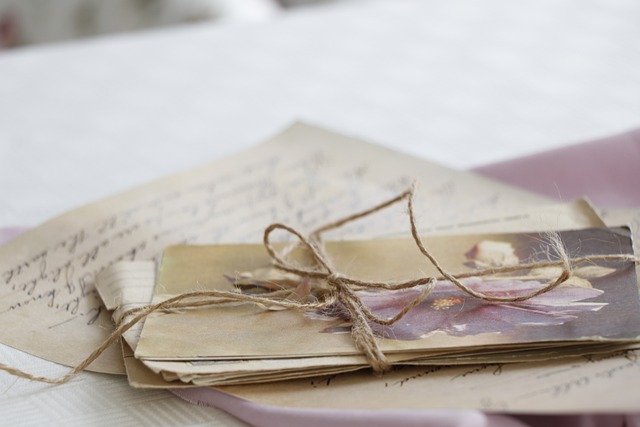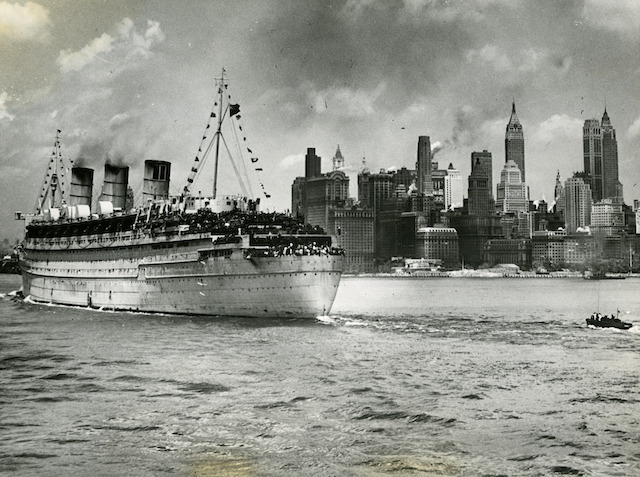Sepia Saturday 781. Sixth in a series about 1943 letters from my dad’s brother Frederic Mason Charboneau during his second year of WWII US Army service.
During 1943, his second year of WWII military service, letters home from my dad’s brother Frederic Mason Charboneau changed from those he wrote the first year — and so did the list of his regular correspondents.
Fred’s 1942 letters to his mother Mary (Owen) Charboneau contained constant queries about men from back home who might have entered service. Where were they stationed? What U.S. camp did they train at? Anybody serving near him in North Africa?
He was also clearly nostalgic about his recent civilian life — the cold Adirondack winters in his Otter Lake , N.Y., hometown, his dad Wm. Ray Charboneau’s annual hunting trip in Canada, his maternal grandfather Frank “Pop” Owen’s annual summer stay at the Otter Lake Hotel, which was run by his parents.
An army of female correspondents
But as 1943 rolled around, he seemed settled at his North Africa base and engaged in more interaction with his army of female correspondents — close relatives, female friends, sisters-in-laws, and even distant cousins who kept in regular touch.
Family connections come alive in reading his letters — a tremendous gift to a family historian like me, which I am sure my Uncle Fred would be surprised about. Almost as surprised as he was to hear from an unknown cousin.
March 6, 1943. “I had another letter from Cleo Owen. It certainly seems strange to get mail from a relation that you have never seen before. She said in her letter that she was going to write Pop in a few days telling him about my letter.“

Fred’s mother (my grandmother) Mary was from a large Welsh-Irish family in Baltimore, Maryland. Cleo (Owen) Riordan was the daughter of her brother Joseph and wife Alma (Mask) Owen. Clearly the word had gone out among family that Fred was in the service, and Cleo decided to write him — something many women were likely doing during WWII.
In the same letter, Uncle Fred mentions other family and in-laws.
“I have written several times that I received all of the boxes but will do so once more. The cookies that you spoke about arrived in fine shape and were very good though they were almost two months old. They didn’t taste a bit stale, but it may have been because we haven’t had anything like that for so long. The cake the Louis and Evelyn sent came several days ago and was very good. Also, the box of Loft’s candies from Aunt Kate.“
Aunt Kate was Katherine (Owen) Negri, one of Mary’s sisters who lived in New York City with husband Caesar. The cake senders were in-laws Louis and Evelyn (Coburn) DesJardins. Fred’s oldest brother Owen Charboneau was married to Louis’s sister, Aline DesJardins.
After the war, my uncles Fred and Owen pooled resources and opened the Charboneau Brothers General Store in Holland Patent, N.Y., and Louis worked there for awhile.
As for the two-month-old cookies? Well, I might not have eaten them — but Fred did and lived to tell the tale.
Family support beyond letters

Besides being a regular correspondent, Aunt Kate provided a New York City crash pad for visiting family members. Uncle Fred describes his newly-enlisted brother Hubert’s visit to Aunt Kate, which she wrote him about.
April 13, 1943. “How about Hubert. Did he get a chance to come home for a few days? I got a letter from Aunt Kate, and she said that he had been over and that he was looking fine. She said that he had lost a little weight but that he was gaining it back.“
His mother also wrote him about Hubert’s visit to New York City — prompting Uncle Fred to express how happy he would be to come home at the end of the war.
April 17, 1943 “In your letter you said that Hubert and another fellow had been over to New York and saw Kate and Ceaser [sic]. I got a letter from Kate telling me that. What I am getting at is this. You said, quote ‘New York won’t be any sight to me after having seen half the world.’ Unquote. Well I beg to differ with you, that will be one of the happiest days in my life is when I see that little old Lady in New York Harbor, as you can well imagine.“
Next month, “Censorship Ends: Where Uncle Fred served during WWII.” Meanwhile, please visit the other intrepid bloggers over at Sepia Saturday.
© 2025 Molly Charboneau. All rights reserved.


Love reading your Uncle Fred’s letters home and getting a glimpse into the social aspect of your family history. These letters definitely bring context to your family history and brings your Uncle Fred to life. I’m surprised the cookies were still good. 😉
I love letters and having these saved letters from the war are a treasure. We have a few of my father-in-law’s letters. Great insight in what they were doing.
They are a treasure. Wish I had them for other relatives, such as my Union Army ancestor Arthur Bull from the U.S. Civil War!
Wow what an amazing treasure you have here. Enjoyed the read, thanks 🩷
Thanks, Lex. Please stop by again.
Letters are such a different look at people than just a photograph. You learn things you never even expected. I feel like I’ve gotten to know your family a bit better through the letters you’ve shared.
I hope your off blog writing project is coming along!
Thanks, Kristin. I am also getting to know my dad’s family from these letters — the interconnections among family and close friends during the heightened experience of wartime. The other off-blog writing projects are coming along as well. Thanks for asking!
The letters written by Frederic are such a wonderful legacy of his thoughts, hopes and pleasures in hearing from folks back home. I am lucky to have a number of letters between my parents in 1944-45 in Europe – I only came across these after both their deaths and they are a family,y treasure.
Your letters sound amazing. I only have one wartime letter from my dad, which he sent to his mother, so Uncle Fred’s letters help me fill in what was going on with his family at the time.
Like the other commenters, I find the real wonder in your series on Fred is hearing his voice and getting a sense of his personality, something that is, of course, absent in photos. It’s fascinating to learn from his correspondence how in the 1940s Americans were still a nation of letter and postcard writers. It’s mind-boggling how the U.S. Military Postal Service met the unprecedented challenge of dealing with so much mail for the countless soldiers and sailors scattered all around the globe.
I contrast this with the hundreds of postcards from WWI in my collection, mostly British, French, and German, but there are practically none from US soldiers. (Check out my post for SS#776) Certainly this generation of soldiers wrote letters home, too, but the logistics for receiving mail, much less parcels of cookies, prevented the kind of communication that Fred’s generation got to appreciate.
My dad served in the Korean War and then Vietnam. He was particularly good at letter writing and I inherited quite a few to cherish. At the time international phone service was impossibly expensive so he bought a tape recorder in Japan and began sending my mom and I weekly monologues made on little 3 inch diameter reels. We’d recycle them by recording ourselves and returning them to him. I can’t remember how long that exchange took but probably a couple of weeks. Today’s service people likely don’t realize how easy their communication to the homefolk is compared to what it was in previous times.
The mail logistics in WWII were indeed amazing, and hats off to the women in the Six Triple Eight Postal Battalion for sorting out the mountain of waylaid deliveries. True, communication was slower back then … but I wonder what will be left for posterity by current internet communication compared to the family history details I’ve discovered from Uncle Fred’s letters.
Fascinating post. These letters are such a gift. I’m glad you share this family history here.
Thanks, Susan. I agree. It’s like having Uncle Fred along on a genealogy road trip and so great hearing his “voice” through these letters.
Reading about all these letters, I realized that the Army mail unit must have been a giant organization. I mean, keeping track of the correct location of hundreds of thousands of soldiers fighting their way through Europe is an impressive achievement!
It certainly was, Peter. I wrote a previous blog post about the 6888 Battalion, known as the Six Triple Eight — Army women of color who were assigned to straighten out the U.S. military mail delivery to the troops. They made history doing such an impressive job!
You are so lucky to have these letters! And what wonderful support from the family. The men & women who had such support were truly blessed. I wonder what kind of cookies those were? Chocolate chip? Oatmeal? Either of those kinds would have survived 2 months fairly well. 🙂
Excellent to revisit the letters, the occasions, and consider the feelings of your ancestors. The cookies and cake remind me of sending brownies and cookies to various service men in the 60s when they were away from home and not even in conflict zones. It was always known that they would be shared around with all their friends. We called them “care packages.” Including warm socks or hand knitted mufflers if it was wintertime.
No details on the cookies, alas. But I have been truly moved by the family support Uncle Fred received throughout his time in the Army during WWII. And I agree, Barb. The care packages from home, along with the letters, were much appreciated by Uncle Fred.